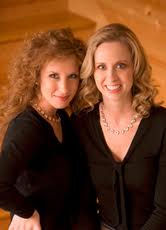Ludwig van BEETHOVEN (1770-1826)
Complete Piano Duets
CD 1 – modern Yamaha piano
Piano Sonata for four hands, in D, op.6 (1797) [6:19]
Eight Variations in C on a Theme by Count Waldstein, WoO.67 (1794) [8:23]
Six Variations on 'Ich Denke Dein' WoO.74 (1805) [4:58]
Three Marches, for four hands, op.45 (1804) [13:41]
Grosse Fuge in B flat, for piano four hands, op.134 (1827) [15:00]
CD 2 – historical fortepianos
Piano Sonata for four hands, in D, op.6 (1797) [6:01]
Eight Variations on a Theme by Count Waldstein, WoO.67 (1794) [8:32]
Six Variations on 'Ich Denke Dein' WoO.74 (1805) [4:48]
Three Marches, for four hands, op.45 (1804) [13:37]
Grosse Fuge in B flat, for piano four hands, op.134 (1827) [13:57]
Amy and Sara Hamann (piano)
rec. Sundin Hall, Hamline University, Saint Paul, Minnesota, USA, 2-4 June 2010 (CD 1); Landmark Center, Saint Paul, Minnesota, 18-22 October 2010 (CD 2)
GRAND PIANO GP 619-20 [48:21 + 46:55]
 Now
here’s a fascinating experiment! Sisters Amy and Sara Hamann play Beethoven’s
complete piano duets on a modern Yamaha piano on CD1, and then again on
CD2, this time on three fortepianos modeled on instruments from 1784, 1800
and 1815, and in a smaller
acoustic space. For history geeks, this offers two learning opportunities:
to hear how the pianists approach the music with each instrument, and to
hear differences in the three old pianos.
Now
here’s a fascinating experiment! Sisters Amy and Sara Hamann play Beethoven’s
complete piano duets on a modern Yamaha piano on CD1, and then again on
CD2, this time on three fortepianos modeled on instruments from 1784, 1800
and 1815, and in a smaller
acoustic space. For history geeks, this offers two learning opportunities:
to hear how the pianists approach the music with each instrument, and to
hear differences in the three old pianos.
On modern Yamaha, the Sonata, Op. 6, sounds like a full-blown mature Beethoven
work, similar to the Sonata No. 25 in its grand homage to classicism. The
tangy, rather clanky fortepiano after J.A. Stein from 1784 moderates this
‘romantic’ feeling, and the Hamann sisters use it to bring out the inner
voices and intricate details. The loudest chords can get harsh on the old
fortepiano, but with shorter sustain times on the notes more detail can
bubble up to the surface.
Again and again the Hamann sisters bring to mind late Haydn on the fortepiano
but the modern grand makes the music seem like it was written decades later.
If you want to show somebody that the period/modern instrument choice really
matters, this album is indisputable proof. The fact that Amy and Sara Hamann
were willing to “play to” the instruments is a great help. And they aren’t
carrying it out as a mere shtick; the ending of the Waldstein variations,
for instance, is still quite witty on the Yamaha: just not as witty.
They actually chose the Yamaha over a Steinway for its “much brighter and
sharper” sound, they told me in a message; “We felt this instrument would
help us illustrate the evolution of the instrument better.”
My colleague Byzantion
said that this experiment is likely to confirm prejudices of listeners,
reaffirming their preference for historical or modern pianos. I love both,
so the lesson I take away is that the music is fascinating to hear in a
different garb, when the performers so well understand that the instrument
makes a difference. Like Byzantion, I find that the Hamann sisters offer
punchy interpretations: the three marches, for instance, really have a delightful
quick step, and the instrument from 1800 responds with a crisp attack and
rich tone. The drier, twiggier sound of the instrument used for the Grosse
Fuge means that their blazing speeds (14 minutes!) work amazingly well;
by necessity you’ll hear the music as if it were new. Together with the
excellent, generous booklet information and the value of having both period
and modern instrument performances in the same CD case, this is one of the
Grand Piano label’s best releases yet.
Two more points I should mention: first, the artist photo/caption on page
19 is misleading, since Sara’s on the left. (My thanks to them for answering
this question.) Second, if you like this idea of having the same performers
on period and modern instruments, do seek out the Beethoven cello sonatas
set by David Hardy and Lambert Orkis, on the Sono Luminus label. The complete
cello music is done twice over, like the piano duets here, on instruments
old and new, and the packaging is even more luxurious, with color photos
from the studio.
Brian Reinhart
One of Grand Piano’s best releases yet, a great experiment fully committed-to.
|
Support us financially
by purchasing this disc from
|
|